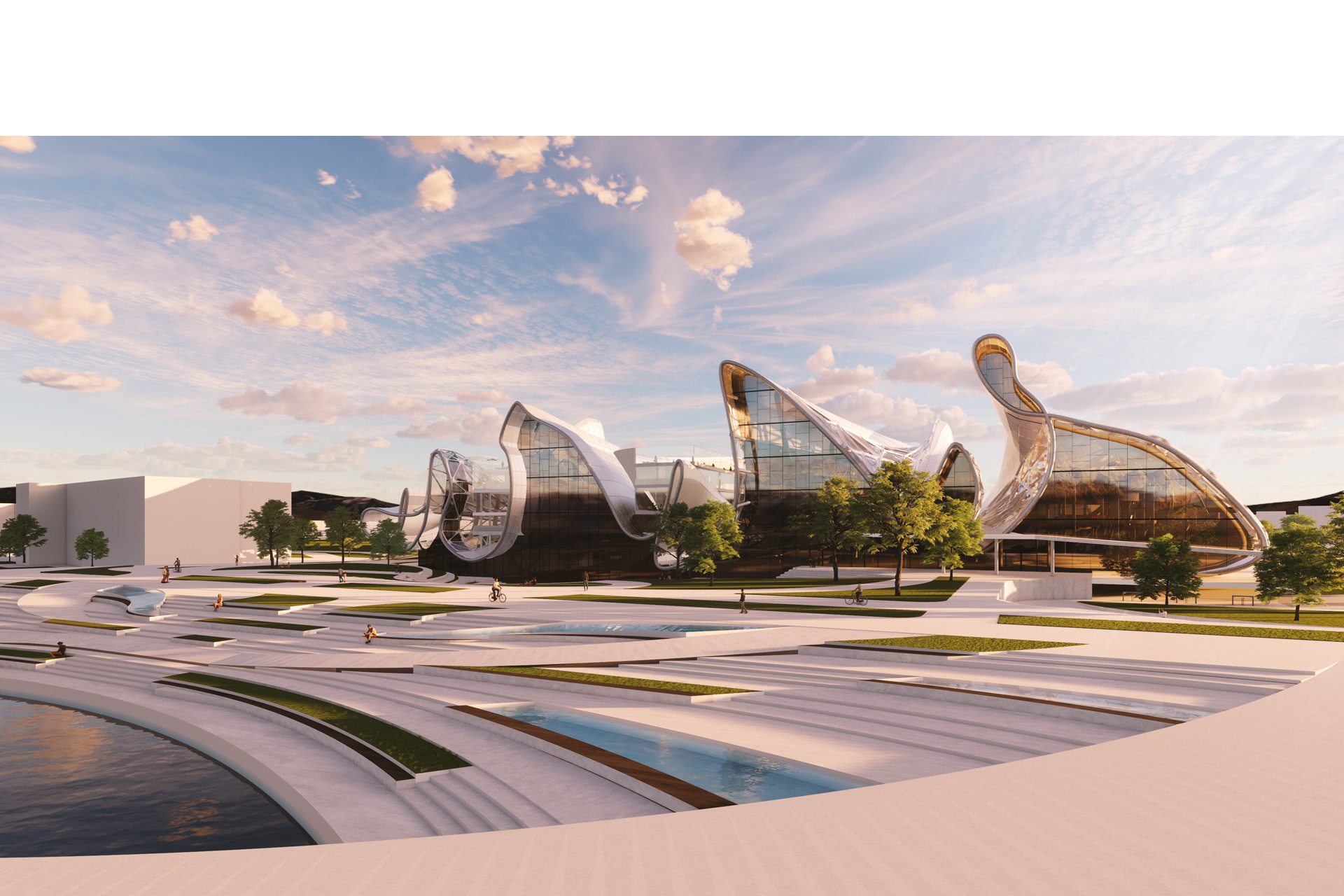06/2021
Dance by the lake – a choreographed dance theatre by Lake Geneva
What do dance and architecture have in common? Is it possible to combine these two artistic movements into one composite work of art?
Samantha Salamon
Diploma in Architecture
E253-4 – Hochbau und Entwerfen
Supervisor: Manfred Berthold
Dance (classical ballet) and architecture are two artistic movements that continue to shape my life. The fundamental purpose of my thesis was to show how these two forms of expression can merge into one composite work of art. To put them both together was a big challenge for me, but I still believed it could work and create something beautiful at the end of the day.
The idea is to record a sequence of a movements from ballet that fill the entire room and in turn, we realise a reproduction of this in a new frozen shape of the building. To achieve this, I used the tracking system motion-capturing and the Project Neuron suit to track my movements and reproduce them on a computer. A jump from the classical ballet, called entrelacé (French meaning: intertwine) helped me to develop some interesting architectural shapes.
The location I have chosen for this is the fourth largest Swiss city, Lausanne, situated by the shores of Lake Geneva. As the capital and headquarters of the Olympic Games, it has a significant influence on sport and culture.
The Béjart ballet, well promoted by the city, plays an essential role, as does the annual dance competition, Prix de Lausanne. Using a dynamic design concept of the Vidy district dance theatre Prés du Vidy, directly on the shores of Lake Geneva, I attempted to create a new, attractive place for art and culture, where work and pleasure come together in an exuberantly promising manner.
To return to the research question, what dance and architecture have in common, the result of my work and comments from Carol Brown (a dance choreographer) should give you the answer:
“Dance and architecture have much in common. Both are concerned with practices of space. For a dancer, the act of choreography as a writing of place occurs through the unfolding of spatial dimensions through gesture and embodied body movement. For the architect, space is the medium through which form emerges and habitation is constructed. For both, the first experienced space is the space of the body.”
Dance (classical ballet) and architecture are two artistic movements that continue to shape my life. The fundamental purpose of my thesis was to show how these two forms of expression can merge into one composite work of art. To put them both together was a big challenge for me, but I still believed it could work and create something beautiful at the end of the day.
The idea is to record a sequence of a movements from ballet that fill the entire room and in turn, we realise a reproduction of this in a new frozen shape of the building. To achieve this, I used the tracking system motion-capturing and the Project Neuron suit to track my movements and reproduce them on a computer. A jump from the classical ballet, called entrelacé (French meaning: intertwine) helped me to develop some interesting architectural shapes.
The location I have chosen for this is the fourth largest Swiss city, Lausanne, situated by the shores of Lake Geneva. As the capital and headquarters of the Olympic Games, it has a significant influence on sport and culture.
The Béjart ballet, well promoted by the city, plays an essential role, as does the annual dance competition, Prix de Lausanne. Using a dynamic design concept of the Vidy district dance theatre Prés du Vidy, directly on the shores of Lake Geneva, I attempted to create a new, attractive place for art and culture, where work and pleasure come together in an exuberantly promising manner.
To return to the research question, what dance and architecture have in common, the result of my work and comments from Carol Brown (a dance choreographer) should give you the answer:
“Dance and architecture have much in common. Both are concerned with practices of space. For a dancer, the act of choreography as a writing of place occurs through the unfolding of spatial dimensions through gesture and embodied body movement. For the architect, space is the medium through which form emerges and habitation is constructed. For both, the first experienced space is the space of the body.”
Diploma in Architecture
E253-4 – Hochbau und Entwerfen
Supervisor: Manfred Berthold
